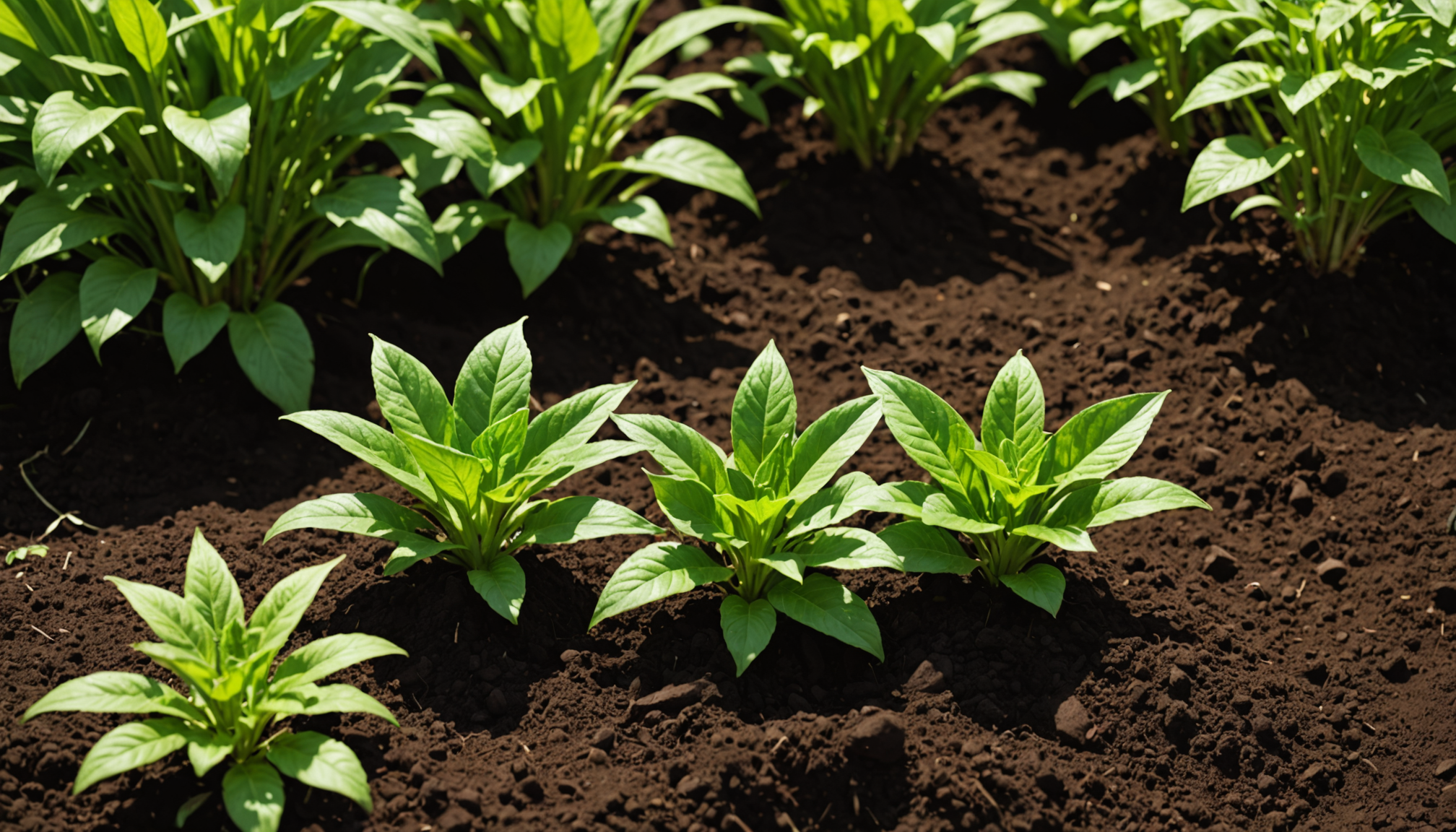Before transforming your yard into a beautifully decorated and functional outdoor retreat, it is essential to begin by thoroughly assessing your outdoor space. This initial evaluation serves as the foundation upon which all subsequent design decisions will rest. By understanding your space, you can maximize both aesthetic appeal and functionality, ensuring that your decorating efforts are efficient, effective, and aligned with your vision.
Start by considering the size and layout of your yard. Measure the dimensions and note any existing structures or features, such as trees, patios, or pools, that could impact your design. Keep in mind the orientation of your yard relative to the sun’s path, which will influence the placement of plants, furniture, and other elements. South-facing spaces, for instance, receive more sunlight, which can be ideal for certain plant species but may also necessitate shade solutions.
Understanding the soil type and condition is also crucial. Conduct a simple soil test to determine if amendments are needed to support plant growth and durability. Different soil types include clay, sand, silt, and loam, each offering unique characteristics. Optimal planting and landscaping depend largely on these factors, as they affect drainage, nutrient availability, and plant selection.
Furthermore, examine any existing drainage issues. If water tends to pool in certain areas after rain, you might need to consider installing drainage solutions or selecting plants that thrive in wetter conditions. Addressing these practical aspects can prevent potential problems and support long-term success in maintaining a decorated yard.
After accounting for physical characteristics, consider how your family uses—or plans to use—the space. Do you envision your yard as a safe playground for children, a serene garden retreat, or a vibrant space for hosting gatherings? Your priorities can guide the design elements you choose to incorporate. Creating zones for various activities might be beneficial, especially if the yard is to cater to multiple purposes simultaneously.
Your yard’s condition and intended use should guide budgeting as well. Allocate resources efficiently by prioritizing elements that offer the greatest return on investment in terms of function, beauty, and long-term enjoyment. Energy savings is another compelling factor. For example, strategically planting trees can provide natural shade, reducing cooling costs during summer months.
To help with prioritization, consider creating a list categorizing elements as “must-haves” versus “nice-to-haves.” This exercise helps in focusing efforts on impactful improvements. Be sure to factor in not just the immediate aesthetic needs, but also ongoing maintenance, as this will impact both cost and time commitment.
| Consideration | Impact on Design and Decoration |
| Yard Size | Determines scale and scope of decoration and furniture selection. |
| Sun Exposure | Affects placement of plants, seating areas, and requires shade solutions. |
| Soil Type | Influences plant selection due to nutrient content and water retention. |
| Drainage | Critical for plant health and longevity, requiring potential landscape adjustments. |
| Family Usage | Guides layout for functionality, ensuring all planned activities are accommodated. |
| Budget | Enables strategic investment in lasting and impactful decorative elements. |
Taking the time to thoroughly assess your outdoor space will ensure that the subsequent steps in decorating are well-informed, cohesive, and truly reflective of your family’s needs and lifestyle. This thoughtful approach will lay the groundwork for a transformative outdoor environment that not only enhances the aesthetic appeal but also enriches the quality of life and enjoyment for all users.
selecting plants and greenery
Selecting the right plants and greenery is a vital step in transforming your yard into a lush, inviting, and personalized outdoor oasis. Plants not only enhance the aesthetic appeal but also contribute to energy savings by providing natural shade and improving air quality. Follow these steps to ensure your plant selection aligns with your decorative vision and environmental needs.
- Identify Your Yard’s Sun and Shade Patterns:
- Observe how sunlight moves through your yard over the course of the day and the seasons. Make note of areas that receive full sun, partial shade, or full shade.
- Choose plants that will thrive under these specific conditions. For example, sun-loving plants like lavender and coneflower are perfect for bright areas, while hostas and ferns do well in shadier spots.
- Consider the Local Climate:
- Select plants that are suitable for your local climate zone. Check zoning maps or consult a local nursery or extension service for guidance.
- Opt for native plants, which are adapted to local conditions and often require less maintenance and water, promoting sustainability and energy savings.
- Determine the Function of Your Greenery:
- Decide if your goal is to create privacy, provide shade, attract pollinators, or produce edible plants. This will guide your choices in terms of plant size, spreading pattern, and functionality.
- For privacy, consider planting hedges or tall grasses, while fruit trees can serve the dual purpose of offering both shade and fresh produce.
- Balance Aesthetics with Practicality:
- Achieve a balanced look by mixing different textures, heights, and colors. Use taller plants at the back of borders and smaller ones at the front to create depth.
- Incorporate perennial plants that return each year, mixed with annuals for seasonal color. This approach minimizes replanting efforts and maximizes long-term enjoyment.
- Plan for Future Growth:
- Account for the mature size of plants to prevent overcrowding and ensure each plant has ample space to grow and thrive.
- Consider potential expansion, such as future plans to add garden paths, water features, or additional planting beds.
- Think About Maintenance:
- Choose plants that match your desired level of maintenance. Some plants require regular pruning and care, while others are more hands-off.
- Regularly assess plant health and make adjustments as needed, like soil amendments or repositioning plants for optimal growth.
By carefully selecting plants and greenery, you not only enhance the beauty of your yard but also contribute positively to the environment and create a space that reflects your family’s lifestyle and enjoyment preferences. This thoughtful approach to decorating ensures your yard becomes a vibrant, sustainable, and cherished part of your home.
choosing outdoor furniture
Choosing the right outdoor furniture is pivotal in transforming your yard into a comfortable, functional, and aesthetically pleasing extension of your home. When done thoughtfully, outdoor furniture can not only enhance your yard decor but also increase your family’s enjoyment of the space, ensuring that it serves as a welcoming retreat for everything from quiet relaxation to lively gatherings.
First, consider the primary function of your outdoor area. Are you envisioning a dining area for alfresco meals, a lounge space for relaxation, or a mixed-use area that accommodates various activities? Clarifying the purpose will help guide your furniture selection, ensuring that you choose pieces that support your intended use of the space.
Material selection is another crucial factor. Given the exposure to outdoor elements, it’s vital to prioritize durability to maintain both appearance and function over time. Opt for materials like teak, wrought iron, or aluminum for their resistance to weather conditions. These materials not only withstand the wear and tear of the elements but also contribute to significant energy savings by reducing the need for frequent replacements.
Comfort should not be sacrificed for style. Choose furniture with comfort in mind, offering ample seating and plush cushions. Weather-resistant cushions add longevity and comfort, enabling you to enjoy extended periods outdoors—whether lounged under a tree’s shade or beneath a well-designed roofing that shields a patio area.
Scale and proportion play key roles in achieving a harmonious outdoor aesthetic. Match the size of your furniture to the dimensions of your yard space to avoid overcrowding or underwhelming expanses. Consider multifunctional pieces such as benches with storage, which are particularly useful in optimizing space for both function and decoration.
Reflect your personal style through the design and color of your furniture. Look for pieces that complement your household’s overall aesthetic, while adding unique touches that make your yard a personalized retreat. Outdoor rugs, decorative throws, and bold-colored chairs can infuse energy and character without overwhelming the natural beauty of the surroundings.
Finally, consider mobility and flexibility in your furniture choice. Pieces that are easy to move or reconfigure can adapt to different occasions, from a quiet family dinner to a large celebration. This adaptability ensures your outdoor furniture remains functional and relevant, no matter how your yard usage evolves.
By thoughtfully selecting outdoor furniture, you cement your yard as a beloved, versatile space that mirrors the personal style and dynamic needs of your household. The right choices in materials, comfort, and design not only decorate the space but also invite greater use and enjoyment, making it a core part of family living.
incorporating lighting features
Lighting can dramatically transform your yard from a daytime retreat into an enchanting nighttime haven. Thoughtfully incorporating lighting features not only enhances the aesthetic appeal but also boosts functionality, safety, and even contributes significantly to energy savings. As you begin planning your lighting design, consider how the various elements can seamlessly integrate with your overall yard decor.
Begin by considering your yard’s primary usage and the ambiance you wish to create. Layered lighting is key—use a combination of ambient, task, and accent lighting to achieve a balanced and inviting atmosphere. Ambient lighting, such as lanterns or LED deck lights, provides overall illumination, while task lighting, like pathway lights or post lights, aids in safety and functionality. Accent lighting, like spotlights or fairy lights, highlights specific features or creates focal points, adding depth and interest to the landscape.
When selecting lighting fixtures, durability is crucial due to continuous exposure to outdoor elements. Focus on weather-resistant materials such as stainless steel or aluminum. You might also consider solar-powered options, which harness natural energy and offer considerable energy savings while illuminating your yard. Not only are these fixtures environmentally friendly, but they also eliminate the need for extensive wiring, simplifying the installation process and potentially reducing costs.
Experimenting with different lighting temperatures can vastly change the mood of your space. Warm white lights create a cozy, intimate ambiance perfect for family gatherings or quiet evenings, whereas cool white lights can be more functional, illuminating tasks or providing a clean, modern look. Colored lighting can add a whimsical or festive touch, ideal for celebratory occasions across seasons.
In areas like dining spaces or under awnings and pergolas, consider adding overhead lighting features. These can range from elegant hanging pendant lights to practical string lights that drape artfully across the space. Be mindful of how these choices blend with any existing roofing or structural elements to maintain cohesion in your design.
Don’t overlook the importance of lighting for safety and security. Ensure that walkways, stairs, and entrances are well-lit to prevent accidents and provide peace of mind. Motion-activated lights near entryways can deter unwelcome intruders without the constant energy draw of continuously lit bulbs, again contributing to energy savings.
Incorporating timers and dimmers can enhance your yard’s adaptability, allowing you to tailor the lighting to different times of day or specific events. This added convenience ensures that your lighting setup can evolve alongside your family’s needs, from quiet evenings to festive gatherings.
Ultimately, by strategically incorporating lighting features, you can transform your yard into a twinkling sanctuary after dark, highlighting its natural beauty and enhancing its utility. Each light not only acts as a decorative accent but also plays a functional role in ensuring your yard remains a safe, enjoyable space for both family and friends to gather.
creating focal points and décor accents
When crafting focal points and décor accents in your yard, think of these elements as the soul of your outdoor space, bringing together form, function, and personal flair. A successful focal point not only draws the eye but also encourages engagement and enjoyment. Starting with larger elements can help anchor the space and provide a clear starting point for integrating both natural and man-made accents.
Consider incorporating a striking water feature, such as a fountain or pond, as a central focal point. The sound of running water can create a serene atmosphere, masking urban noise and inviting natural wildlife like birds and butterflies, fostering a thriving mini-ecosystem. Water features can become a visual masterpiece by carefully arranging stones, surrounding them with lush greenery, or adding fish for a lively touch.
Sculptural elements, whether contemporary sculptures, rustic garden gnomes, or ornate birdbaths, can also serve as compelling focal points. When selecting sculptures, ensure they complement your yard’s overall style—whether traditional, modern, or eclectic. Position these items strategically to guide the eye through the landscape, creating a sense of discovery and adventure.
Use garden structures such as pergolas and arbors to define spaces within the yard. These architectural accents not only provide support for climbing plants like wisteria or roses but also offer shade and create inviting areas of refuge. When covered with lush foliage, these structures can naturally regulate temperatures, contributing to energy savings by cooling adjacent indoor spaces.
Incorporate color and texture with themed planting beds or clusters of vibrant flowers. A carefully selected color palette can create mood and harmony across the yard—cool blues and purples induce a calming vibe, while warm reds and yellows energize. Mixing in textures—from feathery grasses to broad-leafed plants—adds depth and interest to your scenic retreat.
Thoughtfully placed outdoor art and functional decor like vintage lanterns or hanging planters can be a continuous source of enjoyment. These accents enhance the overall aesthetic and can be updated seasonally for fresh vibrancy.
Additionally, creating a cozy nook with well-placed outdoor rugs, plump pillows, and comfortable throws instantly adds a sense of inviting warmth. These areas serve as intimate focal points perfect for reading, contemplation, or personal reflection, nestling you in comfort under open skies or within a sheltered cabana.
Ultimately, establishing focal points and incorporating décor accents thoughtfully not only enhances your yard’s visual appeal but also adds layers of function and enjoyment. These features define the character of your outdoor retreat, reflecting your personal taste and creating a backdrop for cherished family memories.
In conclusion, decorating your yard with thoughtful design and attention to detail transforms it into an inviting extension of your home, perfect for relaxation and family gatherings. By assessing your space, selecting the right plants and furniture, and incorporating lighting and focal accents, you create a personalized oasis that reflects your style and enhances your quality of life. Each decision made, from choosing sustainable, energy-saving options to integrating personal touches, contributes to a stunning outdoor environment that not only looks good but feels welcoming and livable year-round.


